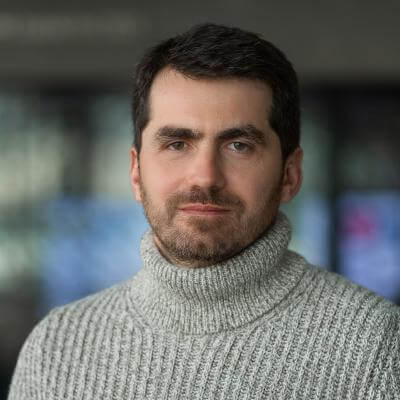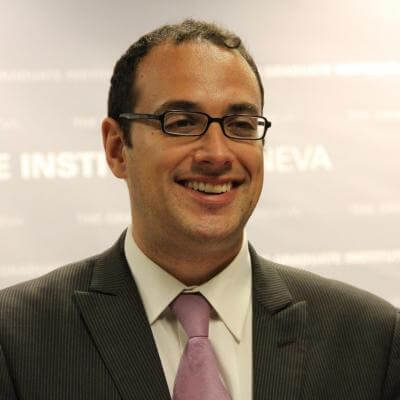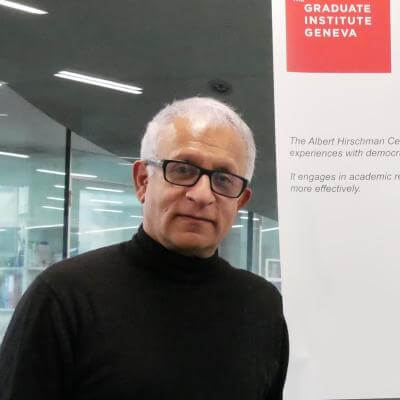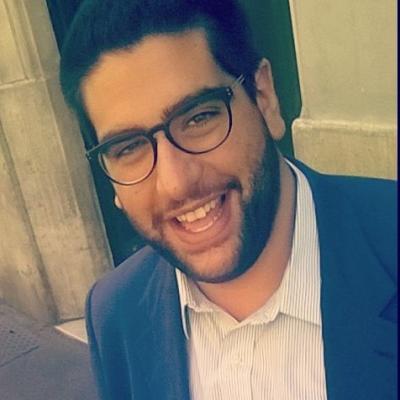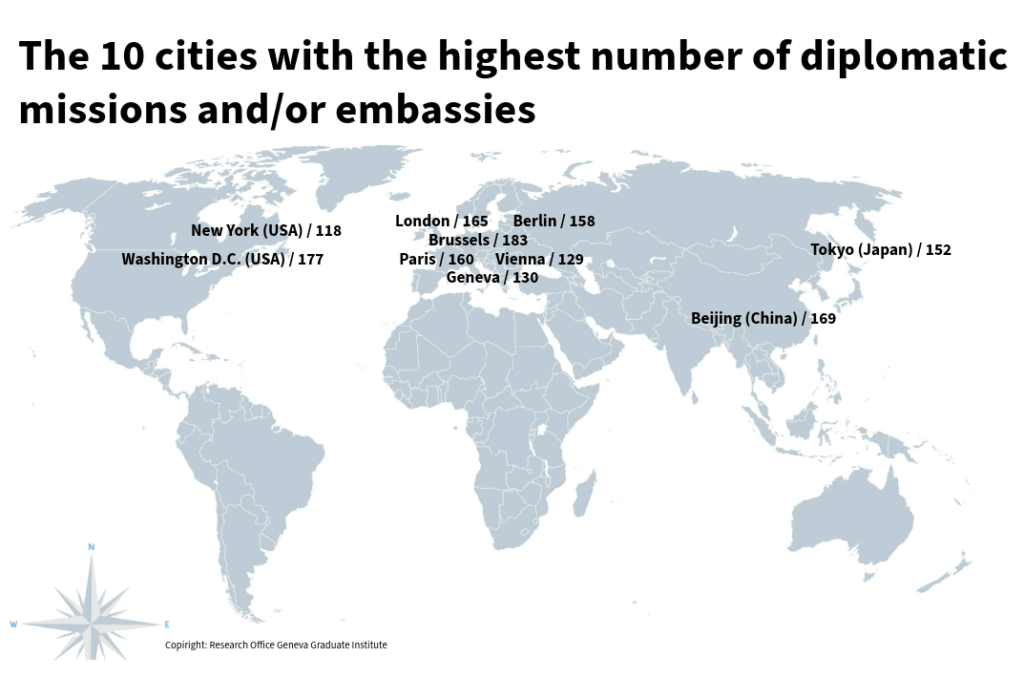Evolving Paradigms in Science and Tech Diplomacy
https://doi.org/10.71609/iheid-94nw-2p09Since the start of this century, science diplomacy has developed into a recognised field of international relations, connecting technology and innovation, diplomatic practice and scholarship. To understand its last two decades of development, it is essential to first acknowledge that the practice of science diplomacy largely predates its formal theorisation. For instance, the era of European and American voyages of scientific exploration, which followed the Age of Discovery, was inspired by the Enlightenment’s confidence in science and reason. Other notable examples include Matteo Ricci’s establishment of astronomical observatories in 16th-century China, Napoleon Bonaparte’s scientific expeditions beginning in 1798, the British scientific networks of the Victorian Empire, and the post–World War II founding of institutions such as UNESCO, CERN, and SESAME.
The seminal report of 2010
It was not until the 2010 report by the Royal Society and the American Association for the Advancement of Science (AAAS) that science diplomacy was conceptualised as a distinct framework, progressively recognised within international relations. The originality of the New Frontiers in Science Diplomacy report lies in its introduction of a bottom-up perspective, representing the first instance of the empowerment of scientists within the field of international relations. It notably positioned academics as central actors in the conceptualisation of science diplomacy, a domain that had previously been predominantly shaped and implemented by traditional public authorities, particularly diplomats. The 2010 report famously defined science diplomacy as being science in diplomacy, science for diplomacy, and vice versa, diplomacy actions for science (the famous motto of “SinD, S4D and D4S”). It encouraged deeper engagement between scientific communities and policymakers, urging scientists to articulate the international/diplomatic relevance of their work while calling on diplomats to embrace scientific knowledge and methods. By the 2010s, science diplomacy began addressing structurally common goods and SDGs issues, such as climate change, migration, public health, development aid, and emerging technologies, highlighting the growing role of scientific input in foreign policy.
This period was also marked by a strong belief in science and globalisation, fuelled by post–Cold War optimism and the emerging conviction in the early 1990s that a balance between cooperation and competition offered the optimal framework for advancing scientific progress and human development. However, this outlook has since been critiqued for its naivety, particularly for overlooking deep-rooted structural inequalities and enduring geopolitical tensions. In the years following the report’s publication, a series of pivotal events exposed the shortcomings of this initial framework and significantly redefined the evolution of science diplomacy as it is understood today. Therefore the 2025 report titled Science Diplomacy in an Era of Disruption, also published by the AAAS and the Royal Society, redefined science diplomacy.
The COVID-19 pandemic: a game changer
The COVID-19 pandemic marked a turning point. Weaknesses in the science-policy interface were laid bare, as tensions flared between national governments and multinational organisations like the WHO. The pandemic underscored the interconnectedness of human health (the One Health concept), environmental systems, and social resilience, thrusting global health and crisis preparedness into the centre of international governance debates. While it demonstrated the value of cross-border scientific collaboration, it also exposed deep vulnerabilities: the difficult connection between expertise and policymaking, the spread of misinformation, conspiracy theories, and public resistance to health measures like vaccination and masking. This erosion of trust in scientific expertise, what some term a “crisis of expertise”, became both a defining feature of the pandemic era and, in retrospect, strengthened the very concept of science diplomacy.
Populism, post-truth, and the politicization of science
A second major force shaping the recent evolution of the field has been the rise of populism together with post-truth narratives, which fundamentally challenge the evidence-based epistemology central to the scientific enterprise. Meanwhile, the politicisation of science under populist leadership has fuelled ideological battles over vaccine mandates, pandemic responses, and climate policy. In these contexts, science has often become a casualty of polarised politics, accompanied by a growing scepticism toward expert knowledge and institutional authority. While initially gaining momentum within emerging scientific ecosystems, with the notable exception of mainland China, this trend has also profoundly affected established powers, most notably the United States, the leading scientific superpower since the mid-20th century. The Trump administration’s systematic undermining of scientific norms, academic freedom, budgets, and institutional integrity exemplifies the extent to which science can be challenged, including under a constitutional democratic order. In contrast, China’s scientific ascendancy has reshaped global science diplomacy through a different trajectory. Combining techno-nationalism with an official Marxist, scientist ideological framework, the PRC has heavily invested in its scientific ecosystem at home and abroad.
Geopolitics, war, and the decoupling of science
A third major factor influencing science diplomacy’s evolution since 2010 has been the impact of war, heightened geopolitical competition, and the trend toward decoupling and de-risking in research. Over the past fifteen years, geopolitical tensions, research security concerns, and scientific sanctions have fundamentally reshaped collaboration and mobility.
The war in Ukraine stands as a watershed moment. In response to Russia’s 2022 invasion and its endorsement by many local academic leaders, major scientific organisations worldwide suspended or terminated collaborations with Russia and Belarus. This rupture challenged the post–Cold War assumption that science could remain a neutral zone of cooperation amid conflict.
Simultaneously, the intensifying US-China rivalry has accelerated decoupling and de-risking, especially in strategic scientific and technological fields: AI, quantum physics, nanotechnology, greentech, etc. National security concerns now restrict knowledge-sharing, academic exchanges, and institutional collaboration. A stark example is the US Department of Justice’s “China Initiative” (2018–2022), which sought to identify individuals or institutions allegedly funnelling sensitive data to China. The conflation of scientific collaboration with national risk led to misplaced targeting, legal overreach, and a chilling effect on international cooperation, including among diaspora scientists.
The shifting geography of knowledge production
A fourth critical development has been the shifting geography of knowledge production. While elite research remains concentrated in Global North institutions, evidenced by Nobel Prize distributions across Switzerland, Scandinavia, and US Ivy League universities, China’s rise as a scientific powerhouse has redrawn the global landscape. Similarly, dynamic research ecosystems in the Global South (including Turkey, India, Egypt, South Africa, Brazil, and Malaysia) underscore the increasingly multipolar nature of global science. Diverging political approaches to science have also emerged, particularly between the US and China. Under President Trump’s second administration, the US are seeing what many term a “war on science”, undermining evidence-based policymaking and international collaboration. Conversely, China has steadily advanced its scientific agenda, investing heavily in research, innovation, and transnational networks. Its leadership in the G77+China coalition during global climate talks challenges traditional assumptions about liberal democracies as the sole engines of scientific excellence and disruptive innovation.
The proliferation of new actors
The proliferation of actors in science diplomacy has introduced both opportunities and complexities. Nontraditional players (academic consortia, think tanks, advocacy university organisations) now shape global discourse. These actors compete with or complement traditional UN bodies, adding new voices to negotiations. At the same time, the politicisation of scientific advice has transformed the field. Once perceived as a neutral input into policy, scientific expertise is increasingly entangled with political agendas. This shift has profound implications for multilateral diplomacy, particularly as science informs global policies on climate change, pandemics, and artificial intelligence.
These dynamics — pandemic disruption, the populist challenge to expertise, and geopolitical shifts led by emerging powers like China — have accelerated the transformation of science diplomacy from a niche concern into a central instrument for understanding and transforming international relations. Also, science diplomacy operates today within an exceptionally fast-changing global landscape in terms of science and innovation. Therefore, the expanding field of technology and innovation diplomacy presents new challenges, and potential threats, that traditional diplomatic actors must now confront and address.
The growing role of tech and innovation or Tech diplomacy
As traditional nation-states adapt to a rapidly changing global landscape, they are increasingly compelled to engage with emerging digital communities, and private (often giant) tech corporate actors. These entities now exert influence over science, innovation, international norms, budgets and political agendas at a pace far surpassing that of traditional state actors. In this context, traditional nation-states are adopting various approaches to tech diplomacy, ranging from dedicated tech-oriented diplomatic strategies, such as Denmark’s initiative starting in 2017, to digital foreign policy frameworks that incorporate elements of tech diplomacy (as seen in Australia, France, the Netherlands, Switzerland, and the UK). Alternatively, some states integrate digitalisation into broader foreign policy strategies, while others focus on specific topics, such as cybersecurity, artificial intelligence, or emerging technologies.
Within the current dominant techno-libertarian paradigm, there is an urgent need to reframe tech diplomacy, transitioning from a corporate-driven diplomatic model to one that emphasises a containment strategy aimed at resisting the dominance of the sovereign tech firm and its alliances. In this regard, tech diplomacy no longer merely constitutes a subfield of science diplomacy but has become a central pillar of it.
Tech diplomacy extends beyond the pursuit of economic gain and political influence through engagement with corporate entities; it entails the construction of an accountable, trustworthy ecosystem for technology, innovation, and data governance; one that is grounded in the protection of fundamental human rights and the reinforcement of democratic norms.
Electronic reference
Balme, Stéphanie. “Evolving Paradigms in Science and Tech Diplomacy.” Global Challenges, no. 17, May 2025. URL: https://globalchallenges.ch/issue/17/evolving-paradigms-in-science-and-tech-diplomacy. DOI: https://doi.org/10.71609/iheid-94nw-2p09.Dossier produced by the Research Office of the Geneva Graduate Institute.
TABLE | The 20 Countries with the Most Diplomatic Missions in the World in 2024
| Country | Total number of posts | Embassies | Consulates | Permanent Missions | Other representations |
|---|---|---|---|---|---|
| China | 274 | 173 | 91 | 8 | 2 |
| USA | 271 | 168 | 83 | 11 | 8 |
| Turkey | 252 | 145 | 93 | 12 | 2 |
| Japan | 251 | 152 | 66 | 10 | 23 |
| France | 249 | 158 | 72 | 18 | 1 |
| Russia | 230 | 143 | 74 | 10 | 3 |
| UK | 225 | 156 | 51 | 11 | 7 |
| Germany | 217 | 148 | 56 | 11 | 2 |
| Italy | 206 | 124 | 74 | 8 | 0 |
| Brazil | 205 | 135 | 58 | 12 | 2 |
| India | 201 | 142 | 50 | 5 | 4 |
| Spain | 190 | 114 | 65 | 10 | 1 |
| South Korea | 187 | 114 | 60 | 5 | 8 |
| Mexico | 161 | 80 | 71 | 8 | 2 |
| Canada | 157 | 98 | 38 | 11 | 10 |
| Argentina | 150 | 87 | 54 | 7 | 2 |
| Netherlands | 149 | 106 | 28 | 10 | 5 |
| Switzerland | 141 | 102 | 30 | 7 | 2 |
| Hungry | 140 | 87 | 43 | 7 | 3 |
| Poland | 135 | 91 | 33 | 9 | 2 |
All data taken from the Lowy Institute’s Global Diplomacy Index 2024.
BOX 1 | Diplomatic Realism
Diplomatic realism, often simply referred to as realism, is a theory of international relations that emphasises the competitive and conflictual nature of relations between States. Here are some key principles of diplomatic realism:
- International anarchy: The international system is anarchic, meaning that there is no higher authority to regulate relations between States. States must therefore rely on their own means to ensure their security and interests.
- State sovereignty: States are the main actors in international relations. They are sovereign and act rationally to maximise their security and power.
- Power and national Interests: States seek to maximise their relative power in relation to other states. Power can be measured in terms of capabilities — military, economic, technological, etc. National interests, often defined in terms of security, survival and prosperity, guide the actions of States.
- Balance of power: States form alliances and adopt strategies to maintain a balance of power, thus preventing a single State or coalition of States from becoming too powerful and threatening their security.
- Inevitable conflict: Realists consider conflict to be an inevitable feature of international relations. States are in constant competition for resources, territory and influence, which can lead to conflict and war.
- Pessimism about cooperation: Realists are sceptical about the possibility of lasting international cooperation. They see international institutions and agreements as tools that States use to promote their national interests rather than as means of genuine cooperation.
Diplomatic realism has been influenced by thinkers such as Thucydides, Machiavelli, Hobbes, and more recently by modern theorists such as Hans Morgenthau and Kenneth Waltz. This theory provides a framework for understanding the behaviour of States in a world where security and survival are of paramount concern. This realist theory is one of the analytical frameworks for international relations, in addition to liberalism and constructivism. They all have in common that they are rooted in Western philosophy.
Source: David Ho, “Les théories chinoises des relations internationales: une brève introduction”, La Revue d’histoire militaire, 4 April 2024.
BOX 2 | The New Diplomacy
“New diplomacy” refers to an evolution in traditional diplomatic practices, marked by the emergence of new actors, new means of communication and new issues. It is a concept that has emerged in response to the challenges and opportunities of the 21st century, marked by globalisation and the growing interdependence of states. It contrasts with traditional diplomacy, which is state-based, secret and bilateral, embodied by foreign ministries and embassies.
- Expansion of diplomatic actors: While traditional diplomacy was monopolised by states, new diplomacy involves multiple actors. It includes non-governmental organisations (NGOs), multinational companies, local authorities (cities, regions), international organisations (UN, WTO, EU…), citizens and social movements.
- Transformation of tools and channels: Digital tools have profoundly changed diplomatic practices. Public diplomacy and “twiplomacy” (diplomacy via X and other networks) enable direct communication between diplomats and the public.
- Broadening of themes: The new diplomacy addresses complex global issues such as climate change, global health, human rights, migration, digital governance and gender equality. For instance, the climate negotiations at COP26 involved not only states, but also NGOs, businesses, indigenous peoples and young activists such as Greta Thunberg.
- Collaborative and multi-level approaches: Diplomacy is no longer just vertical (between governments), but also horizontal, via cooperation networks between cities (e.g. C40 Cities), universities and civil society.
- More transparent and responsive diplomacy. Negotiations are increasingly subject to pressure from public opinion, the media and real-time communication dynamics. This makes diplomacy more visible, but also more vulnerable to polarisation or communication effects.
In summary, new diplomacy is a more holistic and integrated approach to international relations that recognises the complexity and interdependence of the modern world. It seeks to address global challenges through cooperation, engagement with a diversity of actors, and the use of new tools and technologies.
BOX 3 | Figures on International Geneva and Impact of US Cuts on United Nations Funding
- 43 international organisations in the Lake Geneva area (38 in Geneva, 46 in total in Switzerland)
- 183 States represented
- About 750 non-governmental organisations (NGOs)
- More than 4,000 visits per year of heads of state and government, ministers and other dignitaries
- In 2024, 36,460 people were employed in IOs, NGOs and permanent missions:
- 28,962 people employed in IOs
- 4,062 people employed in permanent missions
- 3,436 people employed in NGOs
- In 2024, the United States funded 22% of the UN regular budget, more than China (15.25%) and Japan (8.03%). But in 2025, it significantly reduced its financial contributions:
- Reduction of more than 80% for the UN regular budget, affecting more than 40 international organisations, including UNESCO and the World Health Organisation (WHO)
- Suspension of USD 377 million for UNFPA, the UN agency for reproductive health, impacting 48 programmes in crisis areas such as Gaza, Sudan and Ukraine
- Cuts of USD 160 million for the UN Food and Agriculture Organization (FAO), jeopardising global efforts to monitor avian influenza
- Estimated reduction of 30% for the International Organization for Migration (IOM), affecting more than 6,000 employees worldwide.
- To prevent staff layoffs due to the US funding freeze, the Canton of Geneva has allocated CHF 10 million and the City of Geneva CHF 2 million to support local NGOs.
Sources: République et canton de Genève, “Statistiques cantonales”. République et canton de Genève, Genève internationale, “Facts and Figures”. Confédération suisse, “Facts and Figures about International Geneva”. Better World Campaign, “Proposed FY25 Spending Bill for Foreign Operations Would Gut U.S. Global Standing”, 6 April 2025. United Nations Office at Geneva, “US Funding Cuts Confirmed, Ending Lifesaving Support for Women and Girls”, 27 February 2025. Susannah Savage and Michael Peel, “American Farmers Raise Alarm As US Cuts Funds for UN Bird Flu Fight”, Financial Times, 9 May 2025. International Organization for Migration, “Update on IOM Operations amid Budget Cuts ”, 18 March 2025. US Library of Congress, Congressional Research Service, United Nations Issues: US Funding to the UN System, by Luisa Blanchfield, IF10354, 9 April 2024. Frédéric Julliard, “Genève souffle le chaud et le froid sur les ONG”, Le Temps, 17 February 2025. Fanny Scuderi, “La ville de Genève alloue 2 millions de francs d’aide aux ONG”, 13 March 2025.
VIDEO | Former US Representative to the UN Amb. Sheba Crocker on Her Three Years in International Geneva
U.S. Mission Geneva
VIDEO | Diplomacy Today, with Stephan Klement, EU Diplomat and Special Adviser on Iran Nuclear Issue
Research Office, Geneva Graduate Institute
PODCAST | La diplomatie de la restitution des œuvres d’art avec Amb. Angelo Dan
Research Office, Geneva Graduate Institute
